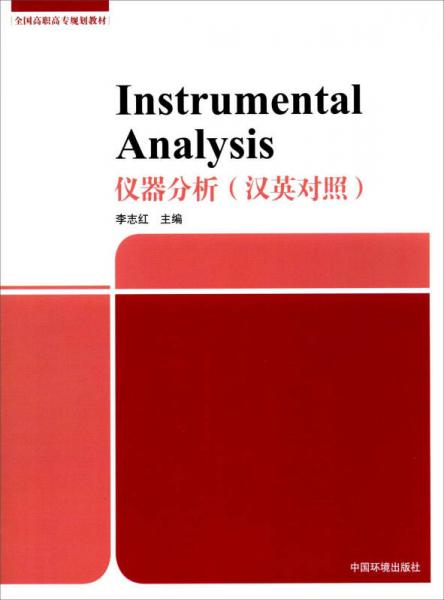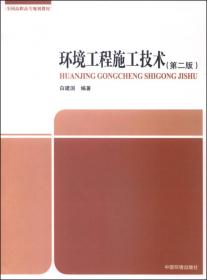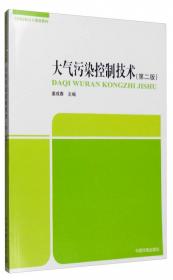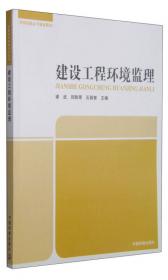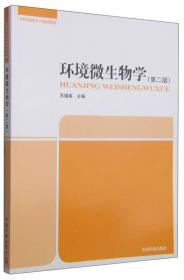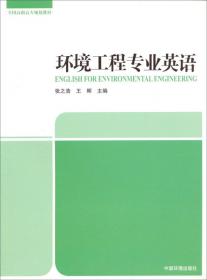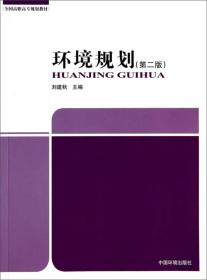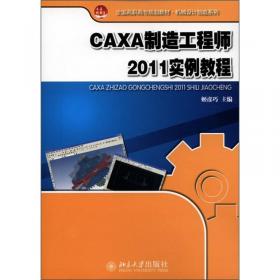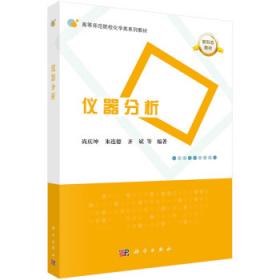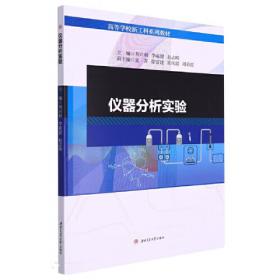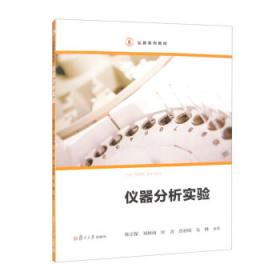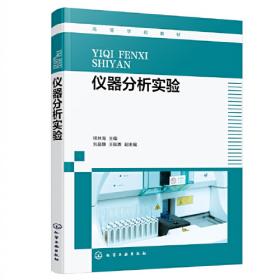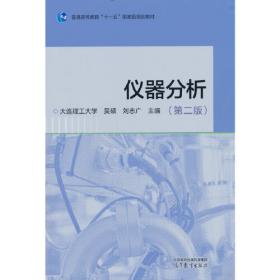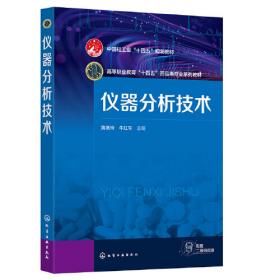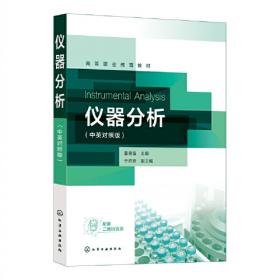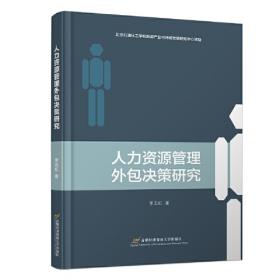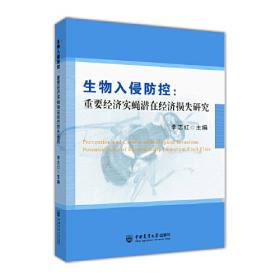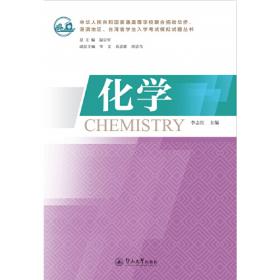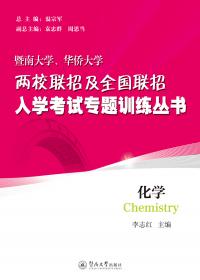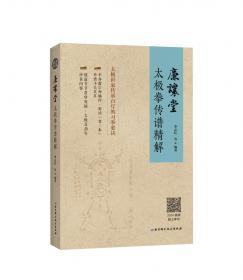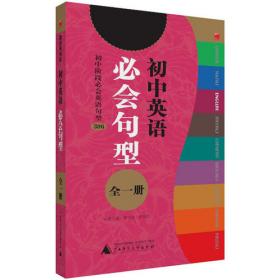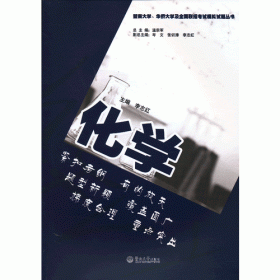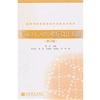仪器分析(汉英对照)
出版时间:
2016-08
版次:
1
ISBN:
9787511128539
定价:
33.00
装帧:
平装
开本:
16开
纸张:
胶版纸
页数:
277页
字数:
410千字
正文语种:
简体中文,英语
4人买过
-
《仪器分析(汉英对照)》共有7章,内容包含:电位分析法、紫外—可见分光光度法、原子吸收分光光度法、气相色谱分析法、高效液相色谱分析法、红外光谱法、质谱法。在编写过程中充分汲取了国外同类教材的新内容,并结合国内现行教材的编写特点,采用“中文导读+难点译注”的方式,中文与英文在内容表述上相辅相成,方便读者全面地了解和掌握常见的仪器分析技术。在每章内容结束后还附有思考练习题,部分章节还给出了建议开设的实验,以帮助学生和教师对相关学习内容进行检查与巩固。 中文导读:1电位分析法
1.1 原理简介
1.2 能斯特方程的应用
1.3 离子选择电极
1.4 直接电位法
1.5 电位滴定法
1.6 电位滴定法的实验数据处理
1.7 电位测定相对误差评价
Chapter 1 Potentiometry
1.1 Introduction
1.2 Indicator Electrodes
1.3 Ion Selective Electrode (pH electrode)
1.3.1 Metallic Electrodes
1.3.2 Membrane Electrodes
1.3.3 Glass Membrane Electrodes
1.3.4 Crystalline Solid—State Electrodes
1.3.5 Liquid Membrane ISES
1.4 Analytical Applications of Potentiometry
1.4.1 Direct Measurement of an Ion Concentration
1.4.2 Potentiometric Titrations
1.4.3 pH Measurements
1.4.4 Errors in pH Measurement with Glass Electrodes
1.4.5 pH Titrations
1.4.6 Titrations of Weak Acids and Bases
1.5 Suggested Experiments
1.6 Problems
中文导读:2紫外—可见分光光度法
2.1 相关知识
2.2 原理简介
2.3 分光光度计
Chapter 2 Ultraviolet and visible absorption spectroscopy
2.1 Introduction
2.2 Electromagnetic Radiation
2.2.1 What is Electromagnetic Radiation
2.2.2 UV—vis Spectmm
2.3 Molecules and Molecular Spectroscopy
2.3.1 Rotational Transitions in Molecules
2.3.2 Vibrational Transitions in Molecules
2.3.3 Electronic Transitions in Molecules
2.4 Lambert—Beer's law
2.4.1 Absorbance and Transmittance
2.4.2 Lambert—Beer's law
2.4.3 Deviations from Beer's Law
2.5 Instrumentation in the UV/Visible
2.5.1 Radiation Source
2.5.2 Wavelength Selection Device
2.5.3 Sample Holder
2.5.4 Detector
2.5.5 Single—Beam and Double—Beam Instruments
2.6 Quantitative analysis by absorption measurements
2.6.1 Procedural Details
2.6.2 Methods in Quantitative Analysis
2.6.3 Analysis of Mixtures of Absorbing Substances
2.7 Accuracy&precision in UV/VIS absorption spectrometry
2.8 Suggested Experiments
2.9 Problems
中文导读:3原子吸收分光光度法
3.1 基本原理
3.2 原子吸收分光光度仪主要部件功能简介
Chapter 3 Atomic Absorption Spectroscopy
3.1 Introduction
3.2 Absorption of Radiant Energy by Atoms
3.2.1 Boltzmann Distribution
3.2.2 Measurements by Atomic Absorption
3.3 Instrumentation
3.3.1 Radiation Sollrces
3.3.2 Atomizers
3.3.3 Monochromator
3.3.4 Detectors
3.4 Correction of interfering absorptions
3.5 Analytical applications of AAS
3.5.1 Qualitative Analysis
3.5.2 Quantitative Analysis
3.6 Suggested Experiments
3.7 Problems
中文导读:4气相色谱分析法
4.1 色谱法简介
4.2 基本原理
4.3 色谱法的分类
4.4 气相色谱仪及色谱流出曲线图
4.5 组分与固定相的作用
4.6 程序升温技术
4.7 色谱分离基础理论
4.8 衡量总体分离效果的指标——分离度R
Chapter 4 Gas chromatography
4.1 Introduction
4.2 Background in formation of chromatography
4.3 General concepts of analytical chromatography
4.4 The chromatogram
4.5 Retention parameters
4.5.1 Retention times
4.5.2 Retention volume (or elution volume) VR
4.5.3 Hold—up volume (or dead volume) VM
4.5.4 Retention (or capacity) factor k
4.6 Separation factor between two solutes
4.7 Resolution factor between two peaks
4.8 Techniques by physical state of mobile phase
4.8.1 Gas chromatography(GC)
4.8.2 Liquid chromatography (LC)
4.9 Essential theories of chromatography
4.9.1 The plate theory
4.9.2 The rate theory of chromatography
4.9.3 Golay's equation
4.10 Optimization of a chromatographic analysis
4.11 Gas chromatography
4.11.1 Components of a GC installation
4.11.2 Mobile Phase
4.11.3 Chromatographic Columns
4.11.4 Stationary Phases
4.11.5 Sample Introduction
4.11.6 Temperature Control
4.11.7 Detectors for Gas Chromatography
4.12 Quantitative Analysis
4.12.1 Analyses Based on Peak Height
4.12.2 Analyses Based on Peak Areas
4.12.3 Calibration and Standards
4.12.4 The Internal—Standard Method
4.12.5 The Area—Normalization Method
4.12.6 Quantitative Applications of GC
4.13 Qualitative Analysis
4.13.1 The Retention Index
4.13.2 Evaluation
4.13.3 GC Coupled with Spectroscopic Detection
4.14 Problems
中文导读:5高效液相色谱分析法
5.1 高效液相色谱简介
5.2 高效液相色谱法与气相色谱法的比较
5.3 高效液相色谱主要类型
5.4 高效液相色谱仪
5.5 梯度洗脱技术
Chapter 5 High—performance liquid chromatography
5.1 Introduction
5.2 The beginnings of HPLC
5.3 General concept of an HPLC system
5.4 Pumps and gradient elution
5.4.1 Pumps
5.4.2 Low and high pressure gradients
5.7 Stationary Phases
5.9 Detectors for HPLC
5.10 Quantitative Applications
5.12 Evolution and applications of HPLC
5.13 Problems
……
中文导读:6红外光谱法
Chapter 6 Infrared Spectroscopy
中文导读:7质谱法
Chapter 7 Mass Spectrometry
-
内容简介:
《仪器分析(汉英对照)》共有7章,内容包含:电位分析法、紫外—可见分光光度法、原子吸收分光光度法、气相色谱分析法、高效液相色谱分析法、红外光谱法、质谱法。在编写过程中充分汲取了国外同类教材的新内容,并结合国内现行教材的编写特点,采用“中文导读+难点译注”的方式,中文与英文在内容表述上相辅相成,方便读者全面地了解和掌握常见的仪器分析技术。在每章内容结束后还附有思考练习题,部分章节还给出了建议开设的实验,以帮助学生和教师对相关学习内容进行检查与巩固。
-
目录:
中文导读:1电位分析法
1.1 原理简介
1.2 能斯特方程的应用
1.3 离子选择电极
1.4 直接电位法
1.5 电位滴定法
1.6 电位滴定法的实验数据处理
1.7 电位测定相对误差评价
Chapter 1 Potentiometry
1.1 Introduction
1.2 Indicator Electrodes
1.3 Ion Selective Electrode (pH electrode)
1.3.1 Metallic Electrodes
1.3.2 Membrane Electrodes
1.3.3 Glass Membrane Electrodes
1.3.4 Crystalline Solid—State Electrodes
1.3.5 Liquid Membrane ISES
1.4 Analytical Applications of Potentiometry
1.4.1 Direct Measurement of an Ion Concentration
1.4.2 Potentiometric Titrations
1.4.3 pH Measurements
1.4.4 Errors in pH Measurement with Glass Electrodes
1.4.5 pH Titrations
1.4.6 Titrations of Weak Acids and Bases
1.5 Suggested Experiments
1.6 Problems
中文导读:2紫外—可见分光光度法
2.1 相关知识
2.2 原理简介
2.3 分光光度计
Chapter 2 Ultraviolet and visible absorption spectroscopy
2.1 Introduction
2.2 Electromagnetic Radiation
2.2.1 What is Electromagnetic Radiation
2.2.2 UV—vis Spectmm
2.3 Molecules and Molecular Spectroscopy
2.3.1 Rotational Transitions in Molecules
2.3.2 Vibrational Transitions in Molecules
2.3.3 Electronic Transitions in Molecules
2.4 Lambert—Beer's law
2.4.1 Absorbance and Transmittance
2.4.2 Lambert—Beer's law
2.4.3 Deviations from Beer's Law
2.5 Instrumentation in the UV/Visible
2.5.1 Radiation Source
2.5.2 Wavelength Selection Device
2.5.3 Sample Holder
2.5.4 Detector
2.5.5 Single—Beam and Double—Beam Instruments
2.6 Quantitative analysis by absorption measurements
2.6.1 Procedural Details
2.6.2 Methods in Quantitative Analysis
2.6.3 Analysis of Mixtures of Absorbing Substances
2.7 Accuracy&precision in UV/VIS absorption spectrometry
2.8 Suggested Experiments
2.9 Problems
中文导读:3原子吸收分光光度法
3.1 基本原理
3.2 原子吸收分光光度仪主要部件功能简介
Chapter 3 Atomic Absorption Spectroscopy
3.1 Introduction
3.2 Absorption of Radiant Energy by Atoms
3.2.1 Boltzmann Distribution
3.2.2 Measurements by Atomic Absorption
3.3 Instrumentation
3.3.1 Radiation Sollrces
3.3.2 Atomizers
3.3.3 Monochromator
3.3.4 Detectors
3.4 Correction of interfering absorptions
3.5 Analytical applications of AAS
3.5.1 Qualitative Analysis
3.5.2 Quantitative Analysis
3.6 Suggested Experiments
3.7 Problems
中文导读:4气相色谱分析法
4.1 色谱法简介
4.2 基本原理
4.3 色谱法的分类
4.4 气相色谱仪及色谱流出曲线图
4.5 组分与固定相的作用
4.6 程序升温技术
4.7 色谱分离基础理论
4.8 衡量总体分离效果的指标——分离度R
Chapter 4 Gas chromatography
4.1 Introduction
4.2 Background in formation of chromatography
4.3 General concepts of analytical chromatography
4.4 The chromatogram
4.5 Retention parameters
4.5.1 Retention times
4.5.2 Retention volume (or elution volume) VR
4.5.3 Hold—up volume (or dead volume) VM
4.5.4 Retention (or capacity) factor k
4.6 Separation factor between two solutes
4.7 Resolution factor between two peaks
4.8 Techniques by physical state of mobile phase
4.8.1 Gas chromatography(GC)
4.8.2 Liquid chromatography (LC)
4.9 Essential theories of chromatography
4.9.1 The plate theory
4.9.2 The rate theory of chromatography
4.9.3 Golay's equation
4.10 Optimization of a chromatographic analysis
4.11 Gas chromatography
4.11.1 Components of a GC installation
4.11.2 Mobile Phase
4.11.3 Chromatographic Columns
4.11.4 Stationary Phases
4.11.5 Sample Introduction
4.11.6 Temperature Control
4.11.7 Detectors for Gas Chromatography
4.12 Quantitative Analysis
4.12.1 Analyses Based on Peak Height
4.12.2 Analyses Based on Peak Areas
4.12.3 Calibration and Standards
4.12.4 The Internal—Standard Method
4.12.5 The Area—Normalization Method
4.12.6 Quantitative Applications of GC
4.13 Qualitative Analysis
4.13.1 The Retention Index
4.13.2 Evaluation
4.13.3 GC Coupled with Spectroscopic Detection
4.14 Problems
中文导读:5高效液相色谱分析法
5.1 高效液相色谱简介
5.2 高效液相色谱法与气相色谱法的比较
5.3 高效液相色谱主要类型
5.4 高效液相色谱仪
5.5 梯度洗脱技术
Chapter 5 High—performance liquid chromatography
5.1 Introduction
5.2 The beginnings of HPLC
5.3 General concept of an HPLC system
5.4 Pumps and gradient elution
5.4.1 Pumps
5.4.2 Low and high pressure gradients
5.7 Stationary Phases
5.9 Detectors for HPLC
5.10 Quantitative Applications
5.12 Evolution and applications of HPLC
5.13 Problems
……
中文导读:6红外光谱法
Chapter 6 Infrared Spectroscopy
中文导读:7质谱法
Chapter 7 Mass Spectrometry
查看详情
-
九五品
江西省南昌市
平均发货10小时
成功完成率94.49%
-
九品
江西省南昌市
平均发货10小时
成功完成率93.28%
-
八五品
江苏省南京市
平均发货13小时
成功完成率88.04%
-
八五品
陕西省西安市
平均发货10小时
成功完成率92.91%
-
仪器分析(汉英对照)
正版二手书,图片套装请联系客服再下单,均有笔记不影响使用,无赠品、光盘、MP149603等
八五品
山东省枣庄市
平均发货9小时
成功完成率87.86%
-
仪器分析(汉英对照)
正版二手,均有笔记不影响使用,无赠品、光盘、MP3等。如需购买套装书,请联系客服核实,批量上传数据有误差,套装书售后运费自理,还请见谅!
八五品
山东省枣庄市
平均发货8小时
成功完成率88.56%
-
八五品
山东省济南市
平均发货8小时
成功完成率94.37%
-
 7
7
八五品
湖南省怀化市
平均发货8小时
成功完成率97.35%

 占位居中
占位居中

